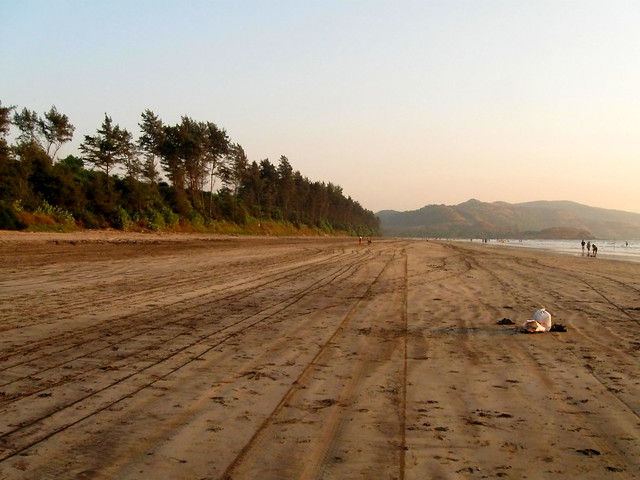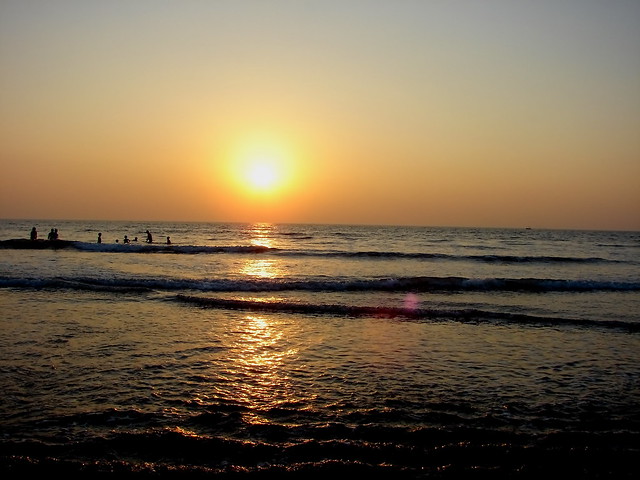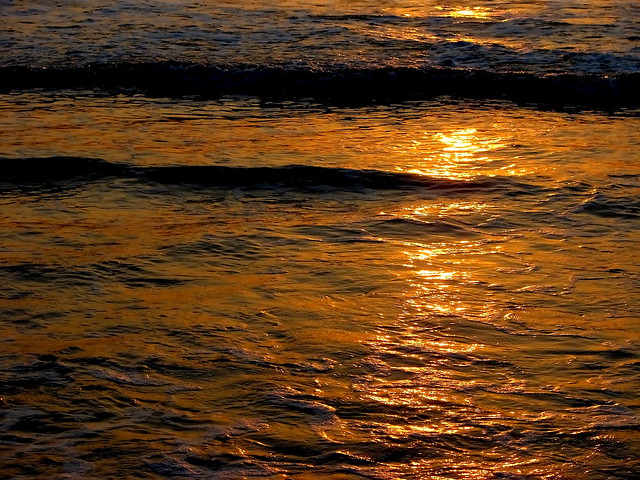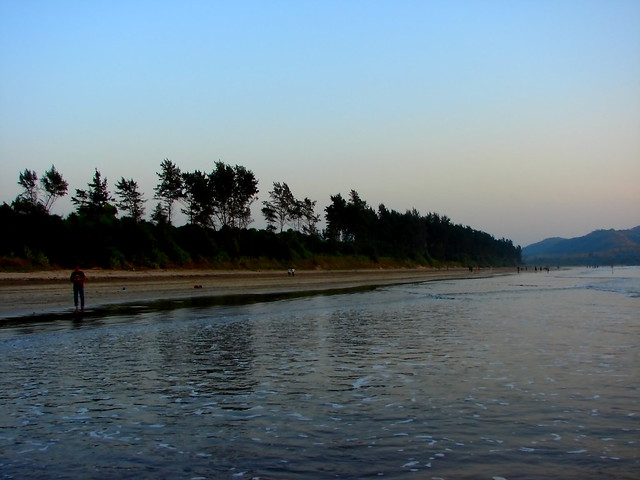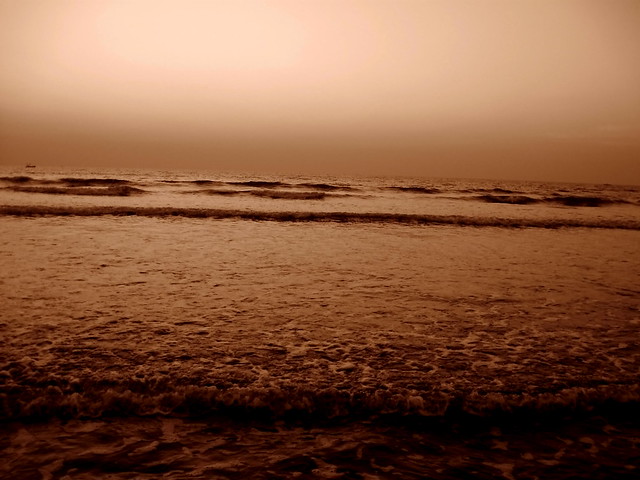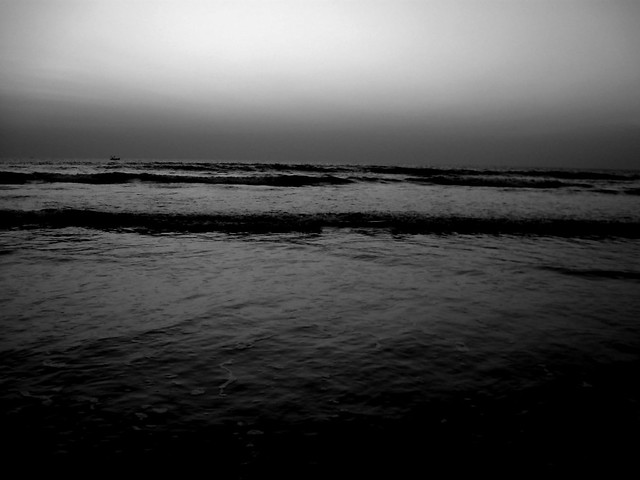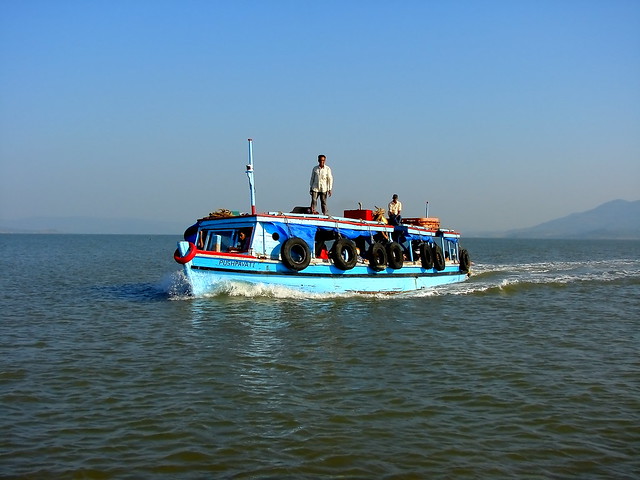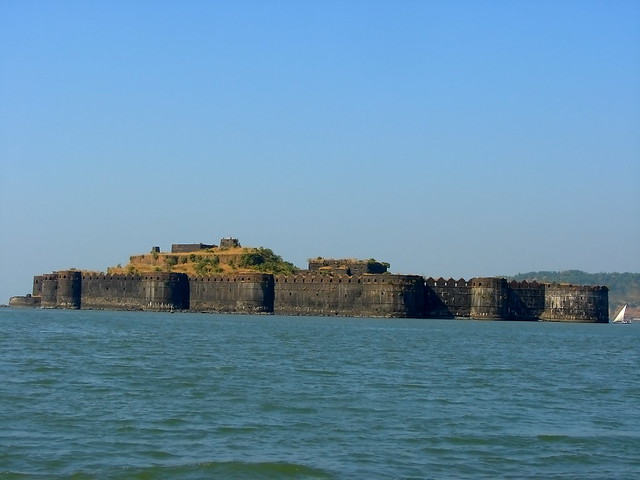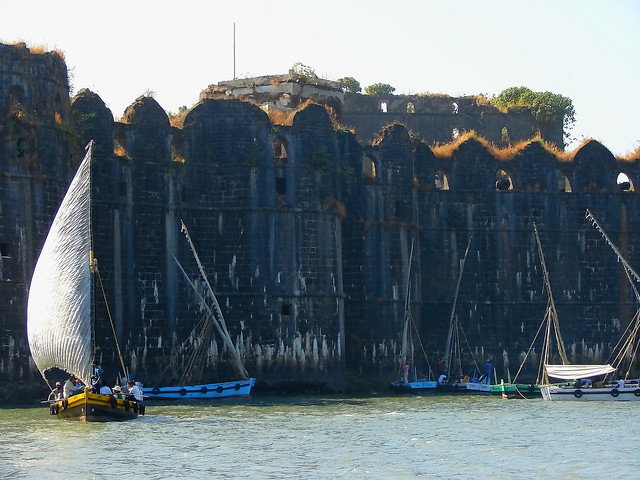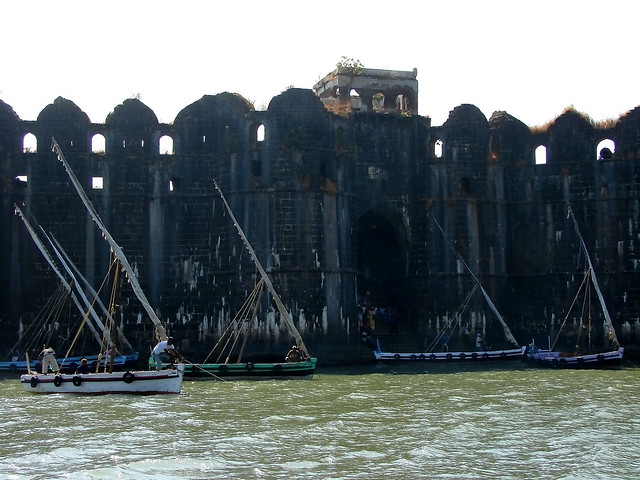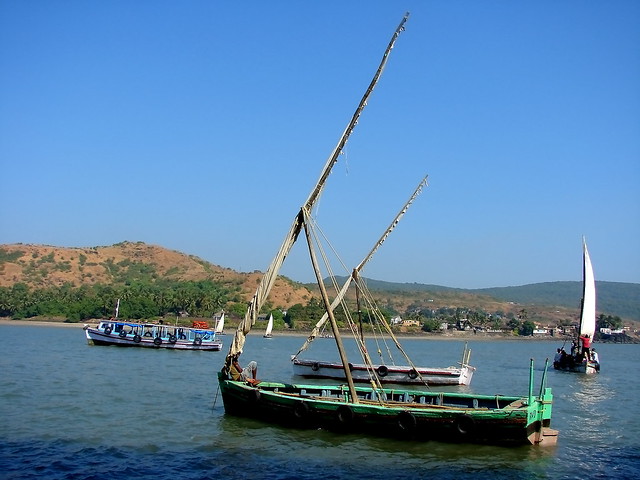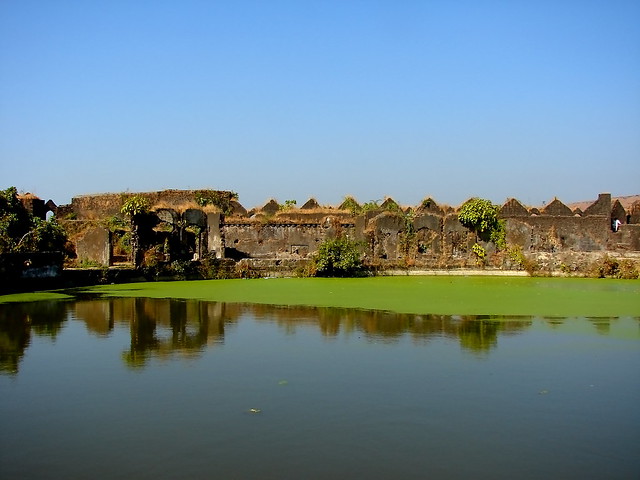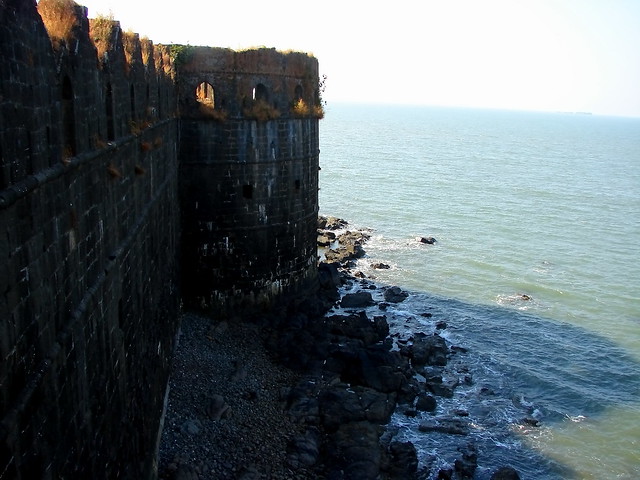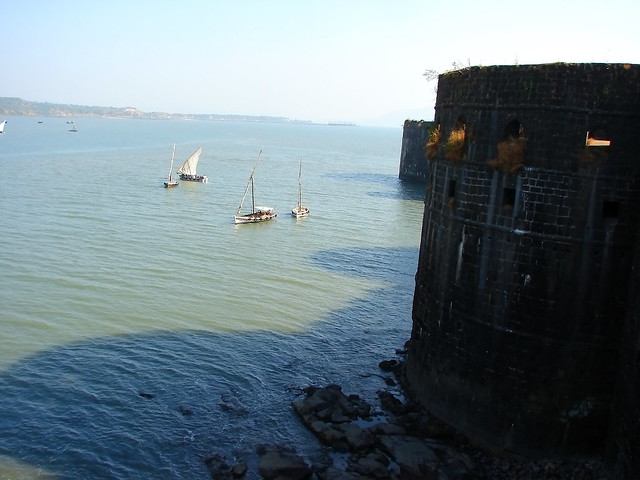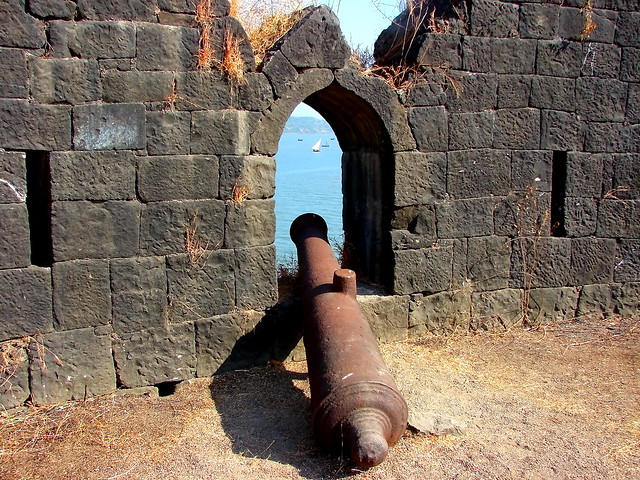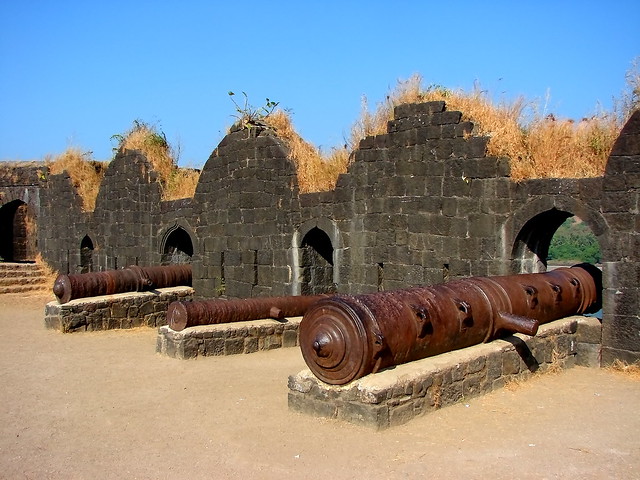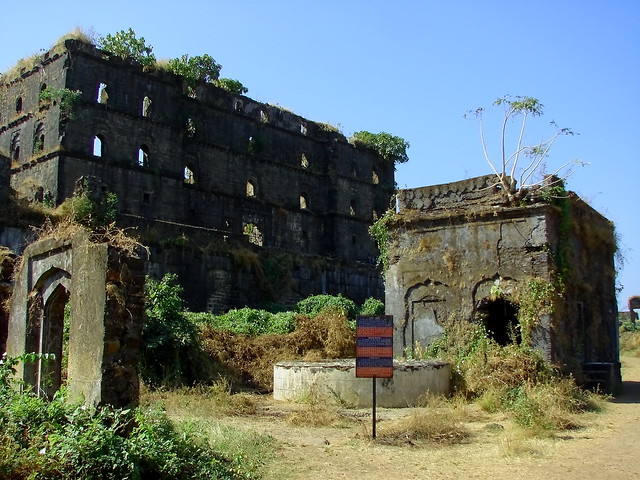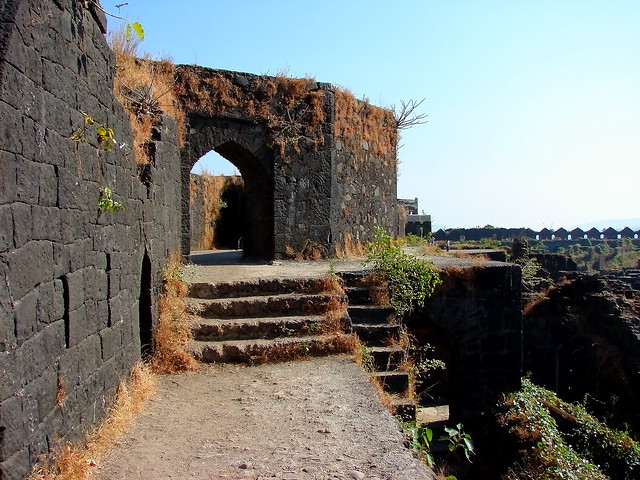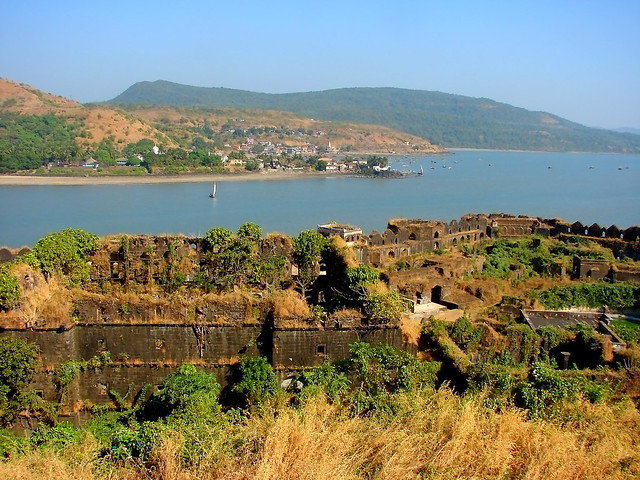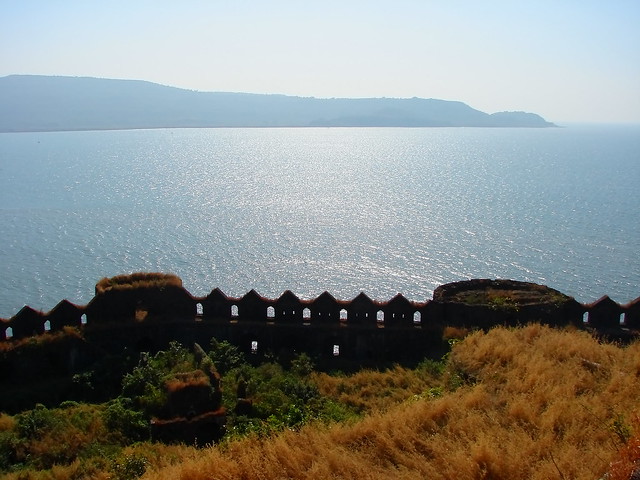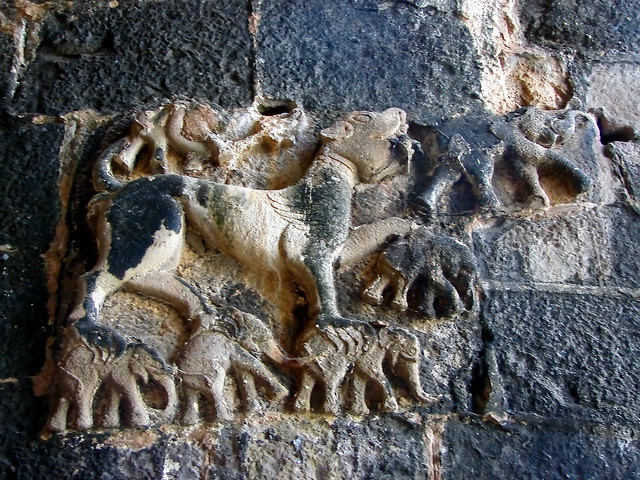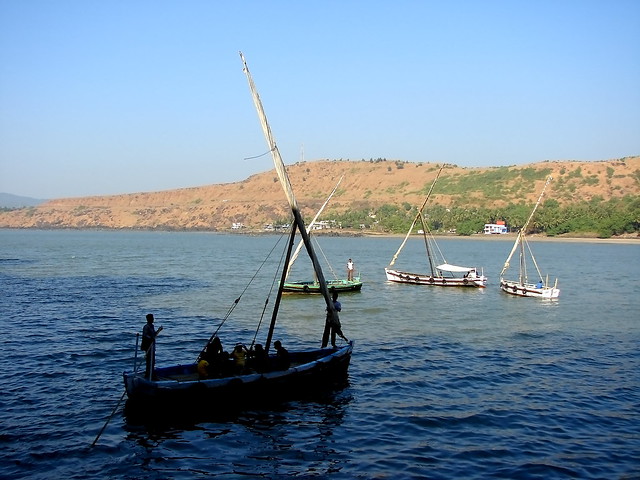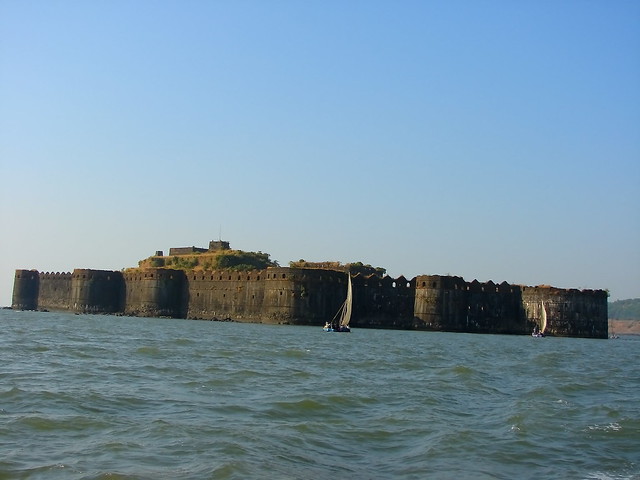Chapter 4: A Golden, Glittering and Gorgeous Sunset at Diveagar
After a short walk from our guest house, we reached the Diveagar beach. The beach was clean and clear and not littered like other famous beaches in India, which was great to see. It was a mile long beach, with coconut and palm trees at the shore. At the fag ends at both sides, the hills prevent the view.
It wasn’t a white sand beach, and the sea wasn’t ferocious. Waves were gentle and the shore did not have steep inclination – in a nutshell, a pretty safe beach.
There were commercialization like paragliding, horse riding, camel riding with small tupris but too less compared to Goa and all.
The sun was setting fast. The hue above became a golden and orange colored blanket with the glittering sun light being reflected from the golden sea.
We sat and watched the sun setting at the distant horizon. We watched the ships sailing over the golden sea, we watched the seagulls returning to their nests after a busy day, we watched the color of the blanket above changing from golden to grey to dark, we watched the people busy in dipping themselves crazily, we watched the kids riding ponies, we watched them all.
We walked along the shore, with each wave touching our feet gently, as if to express their happiness that we came. The gentle and sultry sea air was so pure and pristine that it perhaps glued us to the shore even after it was dark.
With a joy-filled heart, we returned to our base.
Some more experiments with Lens –
